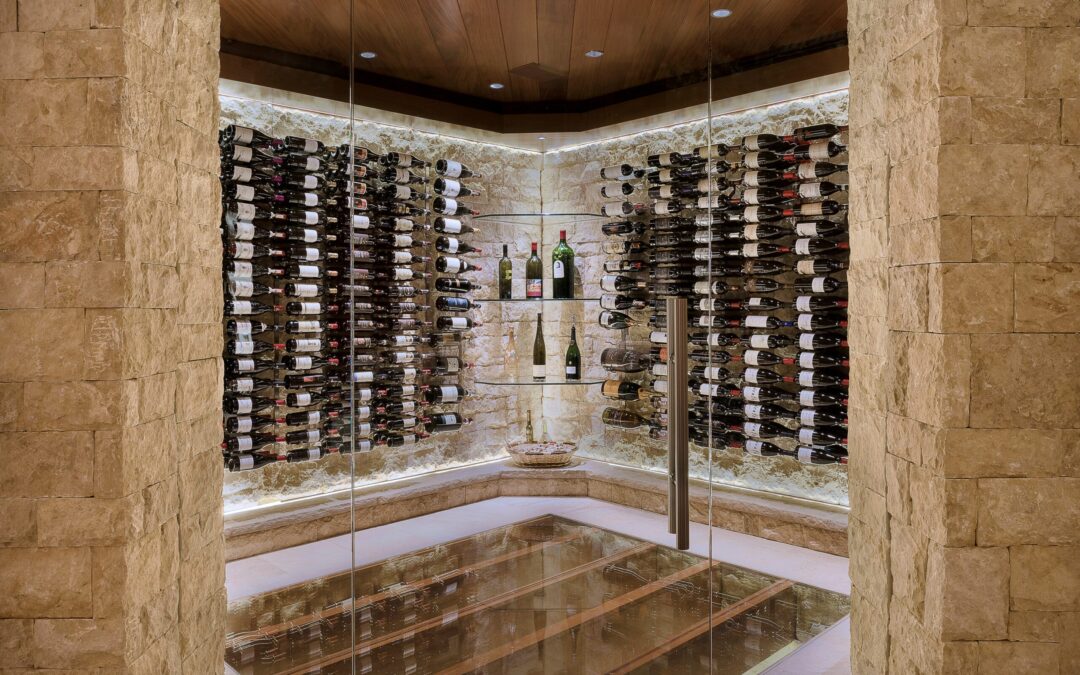A wine cellar is more than just a stylish home feature—it’s a functional storage space designed to maintain optimal conditions for aging and preserving wine. Among the various factors that contribute to a cellar’s effectiveness, depth plays a crucial role, particularly when it comes to installing a reliable cooling system. This is especially relevant when dealing with glass-fronted or fully transparent wine displays, which are increasingly popular in modern interiors.
Minimum Depth: Function Over Form
While there is no universally mandated minimum depth for a wine cellar, most experts agree that a depth of at least 24 to 30 inches (60 to 76 cm) is necessary for practical storage and cooling. This minimum accounts for:
Bottle size and racking: Standard wine bottles are about 12 inches long, and racking systems typically require 13–15 inches of depth. Adding clearance for airflow behind and in front of the racking means you need at least 24 inches of total depth.
Ventilation space: Proper cooling systems need space to circulate air effectively, which requires buffer zones behind racks or between walls and wine bottles.
Installation of cooling equipment: Many through-the-wall or ducted cooling systems require depth both within and outside the cellar. Without sufficient space, you simply can’t install or operate these units effectively.
The Problem with Narrow Glass Wine Displays
Glass wine cellars or displays—often used as architectural statements in kitchens, dining rooms, or lounges—pose unique challenges. While aesthetically stunning, they often lack the physical depth or insulation properties needed to support a cooling system.
One often overlooked issue is condensation. When the glass walls are too close to the cooling system’s supply air, the cold air hits the inner surface of the glass directly. This causes moisture in the air to condense on the glass, leading to fogging, water streaks, and even long-term damage to finishes or flooring.
Why Cooling Systems Struggle in Narrow Glass Cellars
Lack of Space for Equipment
Cooling units, even compact ones, require space for both intake and exhaust airflow. A narrow cellar—say, less than 18–20 inches deep—doesn’t leave enough room to house these systems without interfering with bottle storage or aesthetics.
Poor Air Circulation
Cooling systems depend on air movement to stabilize temperature and humidity throughout the space. In a narrow enclosure, the air tends to stagnate or create hot/cold zones, which is harmful to wine over time.
Insufficient Insulation
Glass, especially if not dual- or triple-paned and UV-protected, is a poor insulator. Narrow glass cellars often lack insulated walls entirely or have only partial sealing, making it extremely difficult to maintain the consistent 55°F (13°C) temperature and 60–70% humidity range that wine demands.
Aesthetic Constraints
Because these cellars are designed to be seen, bulky cooling units are visually disruptive. This often leads to decisions to exclude proper cooling altogether, relying instead on ambient conditions, which can fluctuate dangerously.
Solutions and Considerations
If you desire a glass wine feature, consider building it with minimum 30 inches of depth and incorporating dual-pane glass with UV protection.
Use ducted split systems where equipment can be placed remotely, preserving the sleek look while still providing necessary cooling.
For narrow displays (less than 20 inches deep), treat the installation as a short-term display or a decorative feature rather than a functional aging cellar.
Consult with a wine cellar specialist early in the design process to ensure both visual and environmental needs are met.
Conclusion
A wine cellar’s ability to store and age wine properly depends on more than just appearance. Adequate depth ensures that you can house a proper cooling system, allow for air circulation, and maintain the consistent environment wine needs. While glass-fronted wine cellars offer aesthetic appeal, their form should never compromise the function—especially when temperature and humidity control are at stake. Without proper depth and insulation, a narrow glass wine cellar becomes more of a decorative display than a functional storage space. For both performance and appearance, depth and design must go hand in hand.

